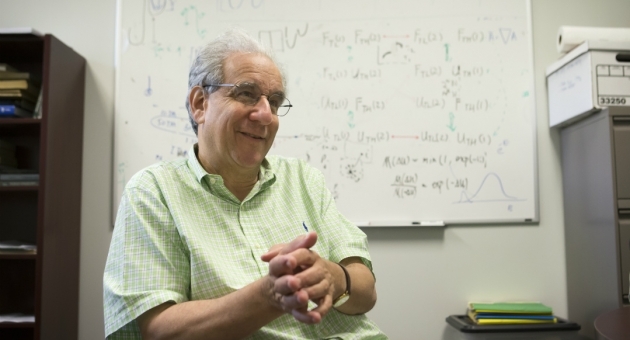Using computers to develop new AIDS drugs

Ron Levy, an internationally renowned AIDS drug researcher, was clearly excited. “It’s a really well-designed space for doing first-rate science,” he said about his new spot on the top floor of the new Science Education and Research Center.
Levy, Laura H. Carnell Professor of Biophysics and Computational Biology, directs the Center for Biophysics and Computational Biology (CB2)—one of seven new research centers that, over the past year, have doubled the number of College of Science and Technology (CST) research centers, creating a collaborative, critical mass of nationally and internationally renowned researchers.
Explaining why he moved from Rutgers University last January, Levy said, “I’ve known Michael Klein, the dean of CST, for many years, and I knew that great things were going on here in computational science.”
Funded by the National Institutes of Health and the National Science Foundation, Levy’s center conducts leading-edge computational research at the intersection of biology, chemistry and biophysics.
“We work on problems in biology from a chemistry background in order to design better pharmaceuticals that improve health,” said Levy. “The targets of most drugs are large protein molecules, but it is not obvious, from either experimental data or even looking at the structure of the molecules, how to best design pharmaceuticals.”
Utilizing model simulations
Enter structure-based design utilizing model simulations—a field whose long-considered promise has begun to be fulfilled in the past five years with the development of much more powerful and accurate simulation methods—techniques that are now capable of creating a framework and making a connection between tremendous amounts of available experimental and structural data. CB2 researchers are using such methodologies as part of the collaborative research efforts of the HIV Interaction and Viral Evolution Center based at the Scripps Research Institute in La Jolla, California. Their goal, said Levy, is “to target new drugs that take out of action important proteins that are essential for the functioning of the AIDS virus.”
Levy’s lab also uses structure-based molecular simulations to assure that drugs bind as tightly as possible to their targets so that they can be taken in the smallest doses possible and minimize side effects. Finally, his group uses sequence-based and statistical techniques to investigate how viruses mutate in order to develop resistance to targeted drugs.
Collaborating with great people
Beyond the new SERC building, the chance to collaborate with other talented researchers also attracted Levy. “Some great people in genomics, such as Sudhir Kumar, the head of the Institute for Genomics and Evolutionary Medicine, have also been recruited,” he said. “We have synergistic interests.
“You want to have great facilities, too,” added Levy, “but fundamentally, great research stems from being around great people. They’re the most important factor. And people are being attracted by the fact that, from the new president to the provost and the dean, at its highest levels, Temple has a very science-and-technology-supportive administration.”
—Bruce Beans